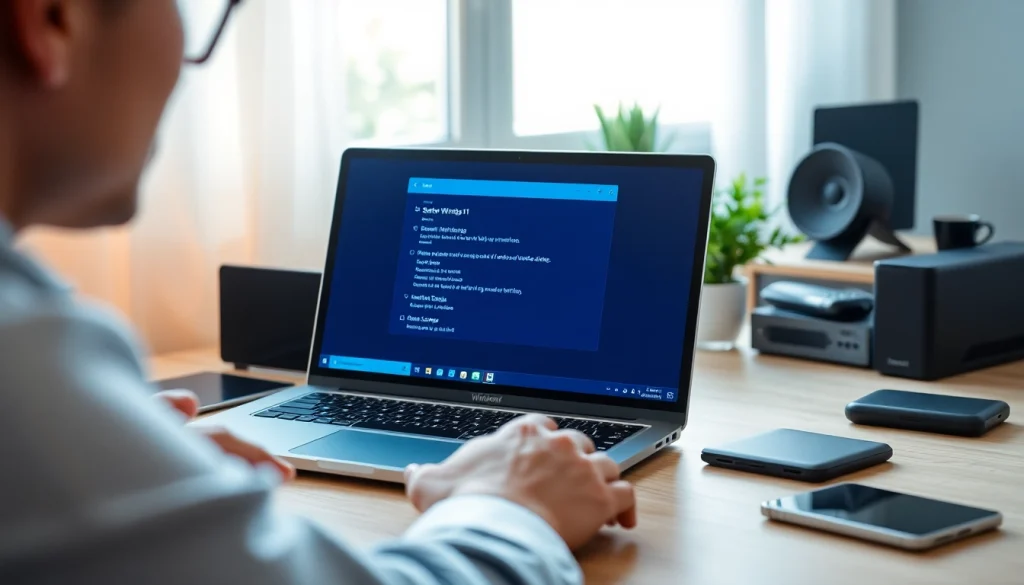Understanding the Causes of Slow Startup
Windows 11 users commonly report experiencing slow startup times, which can significantly hinder productivity and overall satisfaction with the operating system. Understanding the root causes behind these slow starts is crucial for implementing effective solutions. Various factors, from software inefficiencies to hardware limitations, contribute to this pressing issue.
Common Issues Contributing to Slow Starts
One major issue affecting startup times is the accumulation of background applications and services that run during the boot process. These can include unnecessary software and browser extensions that consume valuable resources before the user even begins interacting with their system. Additionally, issues related to free disk space can exacerbate slow starts, as an overloaded hard drive may struggle to load essential files and services quickly.
The Role of Software in Boot Speed
Not only is the quantity of installed software a concern, but the quality of that software also plays a significant role. Outdated or poorly configured applications may conflict with the operating system, causing delays. Furthermore, startup programs can greatly hinder the boot time, as these applications engage system resources that could otherwise be allocated to critical initialization tasks.
Impact of Hardware Performance
While software issues are often the first to be addressed, hardware components are equally vital contributors to startup speed. For instance, legacy hard drives, such as traditional hard disk drives (HDDs), display significantly longer boot times compared to modern solid-state drives (SSDs). Additionally, insufficient RAM may force Windows to slow down operations, especially if multiple applications are being loaded simultaneously at startup.
Preliminary Checks Before Fixing
Before diving into complex troubleshooting procedures to fix Windows 11 slow startup, it’s crucial to conduct preliminary checks. These checks will help identify basic issues that, when resolved, may significantly improve startup performance.
Assessing System Health with Built-in Tools
Windows 11 comes equipped with several built-in diagnostic tools to analyze the system’s health. The Windows Performance Monitor and Task Manager can provide insights into resource usage and background processes, helping to identify any components consuming excessive resources during startup.
Checking Battery and Power Settings
Especially for laptop users, battery and power settings can have an impact on startup performance. Settings such as “Power Saver” mode may throttle performance, leading to slower boot times. It’s advisable to check power plan settings and consider using “High Performance” mode during startup.
Disabling Unnecessary Startup Programs
To expedite the startup process, navigating to Task Manager and disabling non-essential startup programs can prove beneficial. Limiting the number of applications that launch at startup frees up system resources and can dramatically reduce boot times.
Optimizing Windows Settings for Speed
The next step in fixing slow startup issues is optimizing various Windows settings. These adjustments can streamline operations and enhance the overall responsiveness of the system during boot-up.
Adjusting Boot Configuration
Accessing the System Configuration tool (msconfig) allows users to uncheck certain services that may not be necessary during startup. Selecting “Selective startup” and disabling services can help to streamline the boot process without affecting system performance adversely.
Utilizing Fast Startup Features
Windows 11 includes a Fast Startup feature that uses a hybrid shutdown method, combining elements from a full shutdown and hibernation. Enabling this feature can significantly speed up boot times, especially on systems equipped with SSDs.
Updating Windows for Best Performance
Keeping the Windows operating system up-to-date is critical for optimum performance. Updates can include patches that fix bugs related to performance, as well as enhancements that can improve system compatibility with hardware and software. Regularly checking for updates should be a part of any maintenance routine.
Advanced Troubleshooting Techniques
For persistent slow startup issues, advanced troubleshooting techniques may be necessary to delve deeper into the underlying causes and possible solutions. These strategies can help determine if there are more significant issues at play.
Using Performance Troubleshooter
Windows 11 features a Performance Troubleshooter that can automatically diagnose and resolve issues affecting system performance. Accessing this tool through Control Panel can provide tailored solutions based on the specific problems detected.
Diagnosing with Windows Event Viewer
The Windows Event Viewer is an invaluable resource when seeking to uncover reasons for slow startups. By reviewing logs related to boot events, users can identify harmful applications or system errors deciphering past boot attempts and their performance metrics can shed light on the issue.
Analyzing Startup Time with Third-Party Software
For those desiring more comprehensive analysis tools, third-party applications like BootRacer or Startup Delayer can measure boot time and isolate which items are causing delays. Through real-time monitoring, users can devise strategies for improving their startup process based on solid data insights.
When to Seek Professional Help
Despite attempting various fixes, some users may find that their issues persist. In such cases, seeking professional assistance may be the best option. Understanding the right time to consult experts can save users both time and frustration.
Identifying Persistent Issues Beyond Fixes
If typical troubleshooting methods fail to yield improvements, there may be deeper issues at play, such as failing hardware or malware. These complications often require expert diagnostics to resolve effectively. Symptoms like continuous slow boots, unexpected crashes, or unusual system behavior should prompt a consultation.
Understanding Warranty and Repair Options
In the case of hardware issues, warranty status matters greatly. Many manufacturers offer repair or replacement services for devices under warranty, which can save users from incurring out-of-pocket expenses for repairs. Checking warranty documentation can aid in determining repair options available for your device.
Connecting with Technical Support Services
Most operating systems, including Windows 11, have technical support services available. Utilizing official support can provide users with guidance from professionals trained in resolving various issues, potentially addressing complex problems more efficiently than self-diagnosis.
